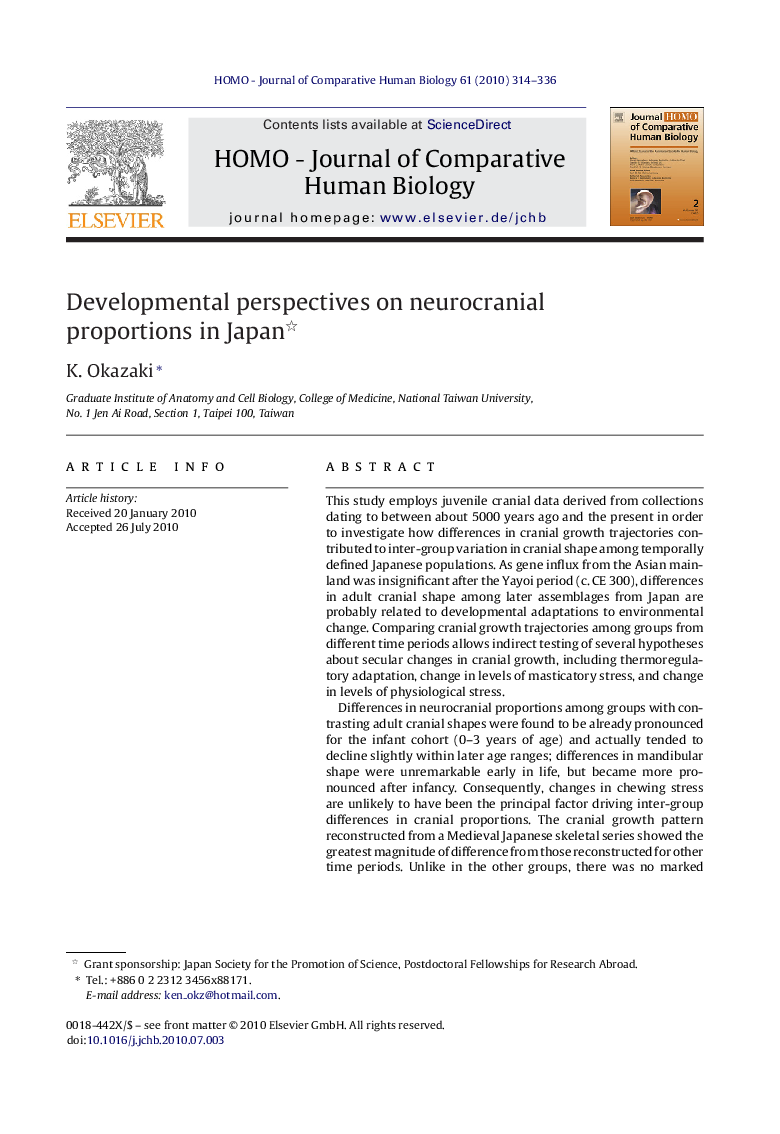| کد مقاله | کد نشریه | سال انتشار | مقاله انگلیسی | نسخه تمام متن |
|---|---|---|---|---|
| 100484 | 160999 | 2010 | 23 صفحه PDF | دانلود رایگان |

This study employs juvenile cranial data derived from collections dating to between about 5000 years ago and the present in order to investigate how differences in cranial growth trajectories contributed to inter-group variation in cranial shape among temporally defined Japanese populations. As gene influx from the Asian mainland was insignificant after the Yayoi period (c. CE 300), differences in adult cranial shape among later assemblages from Japan are probably related to developmental adaptations to environmental change. Comparing cranial growth trajectories among groups from different time periods allows indirect testing of several hypotheses about secular changes in cranial growth, including thermoregulatory adaptation, change in levels of masticatory stress, and change in levels of physiological stress.Differences in neurocranial proportions among groups with contrasting adult cranial shapes were found to be already pronounced for the infant cohort (0–3 years of age) and actually tended to decline slightly within later age ranges; differences in mandibular shape were unremarkable early in life, but became more pronounced after infancy. Consequently, changes in chewing stress are unlikely to have been the principal factor driving inter-group differences in cranial proportions. The cranial growth pattern reconstructed from a Medieval Japanese skeletal series showed the greatest magnitude of difference from those reconstructed for other time periods. Unlike in the other groups, there was no marked decline of cephalic index with age for the Medieval series. The unusual trajectory of cranial growth evident in the Medieval sample may result from a high degree of physiological stress due to overall poor nutrition.
Journal: HOMO - Journal of Comparative Human Biology - Volume 61, Issue 5, October 2010, Pages 314–336